- Home
- Graham Hancock
Magicians of the Gods
Magicians of the Gods Read online
Begin Reading
Table of Contents
About the Author
Photos
Copyright Page
Thank you for buying this
St. Martin’s Press ebook.
To receive special offers, bonus content,
and info on new releases and other great reads,
sign up for our newsletters.
Or visit us online at
us.macmillan.com/newslettersignup
For email updates on the author, click here.
The author and publisher have provided this e-book to you for your personal use only. You may not make this e-book publicly available in any way. Copyright infringement is against the law. If you believe the copy of this e-book you are reading infringes on the author’s copyright, please notify the publisher at: us.macmillanusa.com/piracy.
For Santha, my soul mate.
Acknowledgments
First and foremost my love and appreciation to the photographer Santha Faiia, who honored me twenty years ago by becoming my wife. She had her own successful career long before she met me, but she kindly agreed to work with me. Santha took the majority of the photographs in this book, as in so many of my previous books, and has traveled with me every step of the way on the long journey from Fingerprints of the Gods to Magicians of the Gods. Thank you! Thanks also to our children Sean, Shanti, Ravi, Leila, Luke and Gabrielle. While I was writing Magicians our first grandchild, Nyla, was born and it is a delight to welcome her to our big, boisterous family. Thanks too to my mum Muriel Hancock, and to my uncle James Macaulay, and I keep in my heart fond memories of my dad, Donald Hancock, who taught me so much and who passed away in 2003 after years of unstinting support for my work.
My brilliant literary agent Sonia Land has worked wonders and is everything a great agent should be. My UK editor Mark Booth and my US editor Peter Wolverton have both played hugely positive roles in nurturing Magicians of the Gods and putting it before the public in just the right way at just the right time.
The graphics team who created the maps, charts, drawings and diagrams for this book were Camron Wiltshire and Afua Richardson, with backup from Michael Maudlin and Samuel Parker. My son Luke Hancock also provided a number of diagrams. Each artist is acknowledged individually in the graphics credits but I want to thank them all collectively here for their dedication, talent, intelligence and hard work.
The late Professor Klaus Schmidt of the German Archaeological Institute went far above and beyond the call of duty when he showed me around Gobekli Tepe in Turkey in 2013. As the discoverer and excavator, Klaus possessed unique knowledge of this very special site that he generously shared with me during three days of visits and on-the-spot interviews. I regret his passing but trust that his name will be remembered by history.
I made a research visit to Lebanon in 2014. My work there was greatly facilitated by the kindness, good will and logistical support on the ground given by my friends Ramzi Najjar and Samir and Sandra Jarmakani. Subsequent to the trip I benefited enormously from extensive correspondence concerning Baalbek with archaeologist and architect Daniel Lohmann. He was patient and persuasive in his valiant efforts to persuade me of the merits of the mainstream analysis.
In Indonesia special thanks go to Danny Hilman Natawidjaja, the excavator of the extraordinarily ancient pyramid site of Gunung Padang. Thanks also to his colleagues Wisnu Ariestika and Bambang Widoyko Suwargadi who joined us on an extensive field trip in Java, Sumatra, Flores and Sulawesi.
In the United States I am particularly grateful to Randall Carlson for his deep insights into catastrophist geology and for the knowledge he shared with me during our journey by road from Portland, Oregon, to Minneapolis, Minnesota, to study the effects on the land of the cataclysmic floods that afflicted this entire region at the end of the Ice Age. Thanks, too, to Bradley Young who accompanied us on the journey and did all the driving – a heroic effort!
I am grateful to Allen West, corresponding author amongst the large group of scientists investigating the Younger Dryas comet impact. I tell the story of their work at length in Chapters 3 through 6, and Allen was very helpful in ensuring that I got the facts right and in offering me further insights into the implications of the cataclysm.
Thanks also to Richard Takkou and Raymond Wiley for their sterling efforts as my research assistants at different stages of the project.
Many, many thanks to our dear friends Chris and Cathy Foyle for their solidarity and wise advice.
And last but not least, thanks to my loyal and supportive readers all around the world who have stuck with me for more than twenty years as I’ve pursued my quest for the lost civilization. Magicians of the Gods is the latest destination on that journey and while it is a new work I have inevitably, at a few points, had to revisit ground that I first explored in Fingerprints of the Gods and in my other books in order to place the new evidence I present here in its proper context.
Graham Hancock
Bath, England, September 2015
Introduction
Sand
A house raised on sand will always be in danger of collapse.
The evidence is mounting, though most of the later construction is of high quality, that the edifice of our past built by historians and archaeologists stands on defective and dangerously unsound foundations. An extinction-level cataclysm occurred on our planet between 12,800 and 11,600 years ago. This event was global in its consequences and it affected mankind profoundly. Because the scientific evidence that proves it happened has only emerged since 2007, and because its implications have not yet been taken into account at all by historians and archaeologists, we are obliged to contemplate the possibility that everything we have been taught about the origins of civilization could be wrong.
In particular it must be considered as a reasonable hypothesis that worldwide myths of a golden age brought to an end by flood and fire are true, and that an entire episode of the human story was rubbed out in those 1,200 cataclysmic years between 12,800 and 11,600 years ago—an episode not of unsophisticated hunter-gatherers but of advanced civilization.
Did that civilization, if it existed at all, leave any traces that we might still be able to identify today, despite the passage of so much time? And, if so, does its loss have any real significance for us?
This book is an attempt to answer those questions.
Part I
Anomalies
Figure 1: Location of Gobekli Tepe and its regional setting
Chapter 1
“There is so much mystery here…”
Göbekli Tepe is the oldest work of monumental architecture so far found anywhere in the world, or at any rate the oldest accepted as such by archaeologists.
And it’s massive.
Awesome, magnificent, numinous and overpowering are among the adjectives that dismally fail to do it justice. For the last couple of hours I’ve been wandering round the site with its excavator, Professor Klaus Schmidt, and my mind is frankly boggled.
“How does it feel,” I ask him, “to be the man who discovered the temple that’s rewriting history?”
A rubicund German archaeologist with a barrel chest and a grizzled beard, Schmidt is wearing faded jeans, a blue denim shirt with a streak of mud on the sleeve, and scuffed sandals on his bare, dirty feet. It’s September 2013, three months before his sixtieth birthday and although neither of us know it yet, he’ll be dead in less than a year.
As he ponders my question he wipes a bead of sweat from the glistening dome of his forehead. It’s not yet mid-morning but the sun is high here in Turkey’s Southeastern Anatolia region, the sky is cloudless and the ridge of the Taurus mountains on which we stand is baking hot. There’s no breeze, not eve
n a hint or a breath of air, nor is there any shade to be had. In 2014 a roof will be erected to cover and protect the site but in 2013 only its foundations are in place so we’re standing exposed on a makeshift wooden walkway. Down below us in a series of semi-subterranean, more or less circular, walled enclosures are the dozens of giant T-shaped megalithic pillars that Schmidt and his team from the German Archaeological Institute have brought to light here. Before they began their work the place had the appearance of a rounded hill—in fact “Göbekli Tepe” means “Hill of the Navel”1 sometimes also translated as “Potbelly Hill”2—but the excavations have removed most of that original profile.
“Of course we cannot say that Göbekli Tepe is a temple exactly,” Schmidt answers eventually, obviously choosing his words with care. “Let us call it a hill sanctuary. And I do not claim that it is rewriting history. Rather I would say that it is adding an important chapter to existing history. We thought that the transition from hunter-gatherers to farmers was a slow, step-by-step process, but now we realize that it was a period when exciting monuments that we didn’t expect were made.”3
“And not just monuments,” I prompt. “At the beginning the local people were hunter-gatherers and there was no sign of agriculture.”
“No,” Schmidt concedes, “none.” He gestures expansively at the circles of pillars. “But the people who came to Göbekli Tepe, and who did all this work, invented agriculture! So we see a connection between what happened here and the later emergence of Neolithic societies dependent on farming.”
Figure 2: The central group of excavated enclosures—A, B, C and D—at Gobekli Tepe. All the pillars have been numbered, for ease of reference, by the German Archaeological Institute.
My ears prick up at that word “invented.” I want to be sure I’m getting this right. “So,” I emphasize, “you go so far as to say that the people who made Göbekli Tepe actually invented agriculture?”
“Yes. Yes.”
“Could you elaborate on that?”
“Because in this region we have the early domesticates, both animals and plants. It’s done in this region. So they are the same people.”
“And as far as you are concerned this is the first—the oldest—agriculture in the world?”
“The first in the world. Yes.”
I sense that Schmidt is becoming impatient at the way I’m probing this point, but I have my reasons. The areas of Göbekli Tepe that have been excavated so far are close to 12,000 years old which makes them (according to orthodox chronology) more than 6,000 years older than any other megalithic sites anywhere—sites like Gigantiga and Mnajdra in Malta, Stonehenge and Avebury in England, or the Pyramids of Giza in Egypt. Yet those sites all belong to that phase of the evolution of human civilization that archaeologists call the “Neolithic” (the “New Stone Age”) when agriculture and the organization of society along structured, hierarchical lines were already well advanced, permitting the emergence of skilled specialists who had no need to produce their own food because they could be supported from the surpluses generated by farmers. Göbekli Tepe, by contrast, belongs to the very end of the “Upper Paleolithic,” the late “Old Stone Age” when our ancestors are supposed to have been nomadic hunter-gatherers living in small, mobile bands and incapable of tasks requiring long-term planning, complex division of labor and high-level management skills.
Schmidt and I are standing at a point on the walkway that overlooks both Enclosure C and Enclosure D, where I’ve learned from my background research of an intriguing image carved on one of the pillars. I intend to ask the archaeologist’s permission to climb down into Enclosure D so that I can take a closer look at this image, but I want to get his views about the origins of agriculture, and its relationship to the megalithic architecture, completely clear first. Enclosure C, the largest of the four main pits so far excavated, is dominated by two huge central pillars, both of which are broken. In their original state they would each have been more than 6 meters (20 feet) high and weighed around 20 tons. Inset into the wall around them stand a dozen other pillars. They’re slightly smaller but still prodigious. The same goes for Enclosure D—again a ring of smaller pillars surrounding two towering central pillars, in this case both intact. Their T-shaped tops, angled slightly down to the front, have no features but are nonetheless eerily reminiscent of giant human heads—an impression that is reinforced by the faint outlines of arms, crooked at the elbow, running down the flanks of the pillars and terminating in carefully carved human hands with long fingers.
“All this,” I say, “the megaliths, the iconography, the general conception and layout of the site … to be honest it looks to be as big a project as a place like Stonehenge in England, yet Stonehenge is much younger. So how does what you’ve found at Göbekli Tepe fit in with your notion of a hunter-gatherer society?”
“It’s much more organized than we expected,” Schmidt allows. “What we can see here are hunter-gatherers who obviously had a division of labor because the work on the megaliths is specialist work, not for everybody. They were also able to transport these heavy stones and erect them, which means they must have had some engineering know-how, and again we didn’t expect that for hunter-gatherers. It’s the first architecture really, and it’s architecture on a monumental scale.”
“So if I understand you correctly, Professor Schmidt, you are saying that we are standing at the place where both monumental architecture and agriculture were invented.”
“Yes, that’s right.”
“And yet you don’t see anything really revolutionary in this? You see it as a process which you can fit comfortably into the existing frame of history?”
“Yes. Into existing history. But this process is much more exciting than we expected. Especially since what we have here at Göbekli Tepe belongs more to the world of the hunter-gatherers than to the farming societies. It’s toward the end of the hunter-gatherers but not yet the beginning of the Neolithic.”
“It’s a time of transition then. A cusp moment. And maybe more than that? What I’m getting from our conversation, and from what you’ve showed me of the site this morning, is the notion that Göbekli Tepe was a kind of prehistoric think-tank or a center of innovation, perhaps under the control of some sort of resident elite. Are you okay with that?”
“Yes, yes. It was a place where people came together. People were gathering here and it was undoubtedly a platform for the distribution of knowledge and innovation.”
“Including knowledge of large-scale stone working and knowledge of agriculture. Would you dare to describe those who controlled the site and disseminated these ideas as a sort of priesthood?”
“Whoever they were, they certainly were not practicing simple shamanism. They were a bit more like an institution. So, yes, they were on the road to becoming a priesthood.”
“And since Göbekli Tepe was in unbroken use for well over a thousand years, would this be one continuous culture with its own institutions, with the same ideas and the same ‘priesthood’ who continued to manage the site throughout that whole period?”
“Yes. But the strange thing is that there was a clear collapse in the effort that was made as the centuries went by. The truly monumental structures are in the older layers; in the younger layers they get smaller and there is a significant decline in quality.”
“So the oldest is the best?”
“Yes, the oldest is the best.”
“And you don’t find that puzzling?”
Klaus Schmidt looks almost apologetic. “Well, we hope that eventually we will discover even older layers and that there we will see the small beginnings that we expect but haven’t yet found. Then we have this monumental phase, and later a decline again.”
It occurs to me that “hope” is the operative word in what Professor Schmidt has just said. We are used to things starting out small and simple and then progressing—evolving—to become ever more complex and sophisticated, so this is naturally what we expect to find on archaeological site
s. It upsets our carefully structured ideas of how civilizations should behave, how they should mature and develop, when we are confronted by a case like Göbekli Tepe that starts out perfect at the beginning and then slowly devolves until it is just a pale shadow of its former self.
Nor is it so much the process of devolution that we object to. We know that civilizations can decay. Just look at the Roman Empire, or the British Empire for that matter.
No, the problem at Göbekli Tepe is the pristine, sudden appearance, like Athena springing full-grown and fully armed from the brow of Zeus, of what appears to be an already seasoned civilization so accomplished that it “invents” both agriculture and monumental architecture at the apparent moment of its birth.
Archaeology can no more explain that than it can explain why the earliest monuments, art, sculptures, hieroglyphs, mathematics, medicine, astronomy and architecture of Ancient Egypt are perfect at the beginning without any traces of evolution from simple to sophisticated. And we might well ask of Göbekli Tepe, as my friend John Anthony West asks of Ancient Egypt:
How does a complex civilization spring full-blown into being. Look at a 1905 automobile and compare it to a modern one. There is no mistaking the process of “development.” But in Egypt there are no parallels. Everything is right there at the start.
The answer to the mystery is of course obvious but, because it is repellent to the prevailing cast of modern thinking, it is seldom considered. Egyptian civilization was not a “development,” it was a legacy.4
Could this be the case, also, at Göbekli Tepe?
Klaus Schmidt has no time for ideas of a lost civilization that was the progenitor of all later known civilizations, so when I press him he reiterates his point that most of Göbekli Tepe remains unexcavated. “As I said,” he growls, somewhat testily, “I expect when we get to the earlier levels we will find evidence of evolution.”

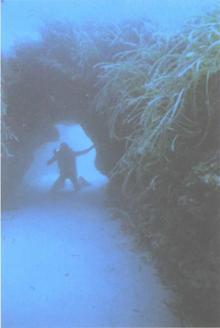 Underworld: The Mysterious Origins of Civilization
Underworld: The Mysterious Origins of Civilization The Master Game: Unmasking the Secret Rulers of the World
The Master Game: Unmasking the Secret Rulers of the World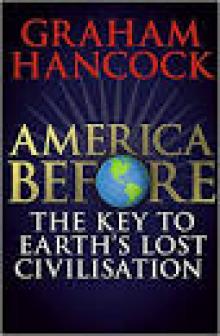 America Before
America Before Entangled
Entangled War God: Nights of the Witch
War God: Nights of the Witch War God: Return of the Plumed Serpent
War God: Return of the Plumed Serpent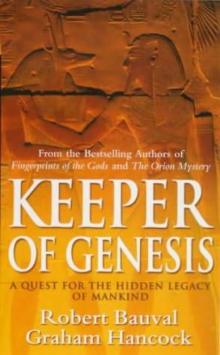 The Message of the Sphinx AKA Keeper of Genesis
The Message of the Sphinx AKA Keeper of Genesis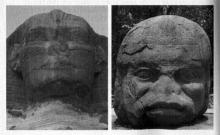 Fingerprints of the Gods
Fingerprints of the Gods The Sign and the Seal
The Sign and the Seal The Mars Mystery: The Secret Connection Between Earth and the Red Planet
The Mars Mystery: The Secret Connection Between Earth and the Red Planet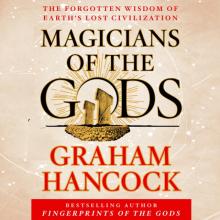 Magicians of the Gods: The Forgotten Wisdom of Earth's Lost Civilization
Magicians of the Gods: The Forgotten Wisdom of Earth's Lost Civilization War God
War God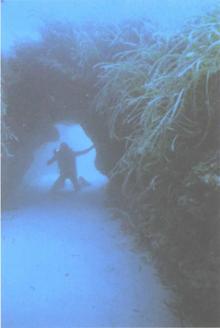 Underworld
Underworld The Mars Mystery
The Mars Mystery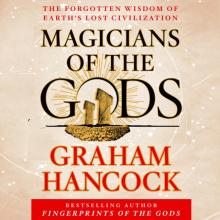 Magicians of the Gods
Magicians of the Gods The Master Game
The Master Game